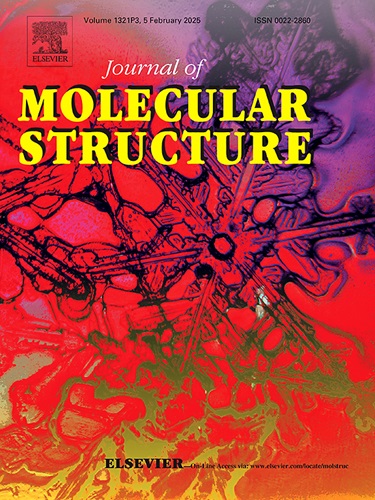Effect of doped sodium on the second-order nonlinear optical properties and intermolecular interactions in supramolecular fullerene architectures
IF 4
2区 化学
Q2 CHEMISTRY, PHYSICAL
引用次数: 0
Abstract
Fullerenes are renowned for highly delocalized π-conjugated structures, which often serve as an ideal nonlinear optical (NLO) material. We aim to regulate the second-order NLO properties of fullerene derivatives via sodium atom encapsulation within the fullerene cage. Herein, supramolecular systems (C70–S, C70–C, Na@C70–S, Na@C70–C) are constructed through concave-convex π-π interactions. Specifically, C70–S and C70–C are modified by doped with sodium atom, this modification procedure notably affects the intermolecular interactions, the charge transfers and the static first hyperpolarizabilities (βtot). Notably, the βtot values (5.56×103 a.u.) of Na@C70-S is significantly greater than that of C70-S (3.07×103 a.u.). Additionally, simulated UV–vis absorption spectra exhibit a marked redshift after doping sodium atom, further providing evidence for the efficacy of in-cage modification strategies. The work paves the way for further exploration of fullerene derivatives with exceptional NLO properties.
掺钠对超分子富勒烯结构中二阶非线性光学性质和分子间相互作用的影响
富勒烯具有高度离域π共轭结构,是一种理想的非线性光学材料。我们的目标是通过钠原子封装在富勒烯笼内来调节富勒烯衍生物的二阶NLO性质。本文通过凹凸π-π相互作用构建了超分子体系(C70-S, C70-C, Na@C70 -S, Na@C70 -C)。其中,C70-S和C70-C被钠原子修饰,这种修饰过程显著影响了分子间相互作用、电荷转移和静态第一超极化率(βtot)。值得注意的是,Na@C70-S的βtot值(5.56×103 a.u)显著大于C70-S (3.07×103 a.u)。此外,钠原子掺杂后的模拟紫外-可见吸收光谱出现了明显的红移,进一步证明了笼内修饰策略的有效性。这项工作为进一步探索具有特殊NLO性质的富勒烯衍生物铺平了道路。
本文章由计算机程序翻译,如有差异,请以英文原文为准。
求助全文
约1分钟内获得全文
求助全文
来源期刊

Journal of Molecular Structure
化学-物理化学
CiteScore
7.10
自引率
15.80%
发文量
2384
审稿时长
45 days
期刊介绍:
The Journal of Molecular Structure is dedicated to the publication of full-length articles and review papers, providing important new structural information on all types of chemical species including:
• Stable and unstable molecules in all types of environments (vapour, molecular beam, liquid, solution, liquid crystal, solid state, matrix-isolated, surface-absorbed etc.)
• Chemical intermediates
• Molecules in excited states
• Biological molecules
• Polymers.
The methods used may include any combination of spectroscopic and non-spectroscopic techniques, for example:
• Infrared spectroscopy (mid, far, near)
• Raman spectroscopy and non-linear Raman methods (CARS, etc.)
• Electronic absorption spectroscopy
• Optical rotatory dispersion and circular dichroism
• Fluorescence and phosphorescence techniques
• Electron spectroscopies (PES, XPS), EXAFS, etc.
• Microwave spectroscopy
• Electron diffraction
• NMR and ESR spectroscopies
• Mössbauer spectroscopy
• X-ray crystallography
• Charge Density Analyses
• Computational Studies (supplementing experimental methods)
We encourage publications combining theoretical and experimental approaches. The structural insights gained by the studies should be correlated with the properties, activity and/ or reactivity of the molecule under investigation and the relevance of this molecule and its implications should be discussed.
 求助内容:
求助内容: 应助结果提醒方式:
应助结果提醒方式:


